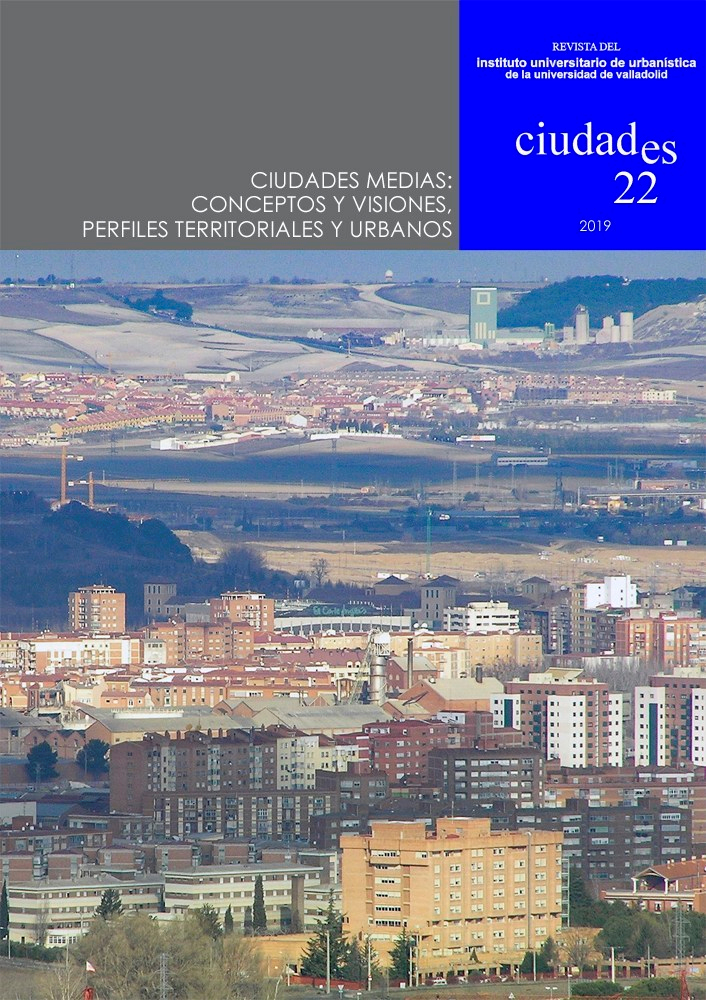Nowadays the trends that, on a global scale, describe an increasingly urban planet are a recurring theme. According to the latest report by the United Nations (The World’s Cities in 2018) more than 55% of the world’s population already lives in urban areas, and this percentage is expected to rise to over 60% in 2030, exceeding 5,000 million people. When such statistics are discussed, emphasis is usually placed on the role of large megacities with more than ten million inhabitants. There are more than thirty at present, and it is expected that their number will continue to grow in the coming decades. However, these cities are now home to only 7% of the world’s population, compared to almost a third who lives in cities with less than one million inhabitants. Among the latter predominate the cities that do not reach half a million inhabitants, where almost half of the world’s urban population currently lives; a percentage that will remain more or less unchanged according to medium-term forecasts. In other words, the majority of the world’s urban population lives and will continue to live in small and medium-sized cities, which have been gaining weight in global urban policies debates, as a brief review of the most recent international panorama illustrates.
The Territorial Agenda of the European Union 2020, agreed in May 2011 under the motto “Towards an Inclusive, Smart and Sustainable Europe of Diverse Regions”, raised the need to achieve a polycentric and balanced territorial development, and underlined the crucial role that medium-sized and small cities can play at the regional level, helping to reduce territorial polarization and boost the economic development of rural areas. These same premises for the promotion of integrated, polycentric and balanced territorial planning policies and plans appear in the New Urban Agenda adopted in October 2016 by the United Nations, which also appeals to the strengthening of the role of small and medium-sized cities and towns. However, it has been at the local level itself where most decisive work has been done in recent years. In particular, United Cities and Local Governments (UCLG), founded in 2004 as the largest organization of local governments in the world, has fostered the debate around the so-called intermediate cities. They are defined not so much by population thresholds, which are estimated at between 50,000 and one million inhabitants, but, above all, by its intermediary role, deployed at different levels and key contribution to the achievement of the Sustainable Development Goals by 2030. The Chefchaouen Declaration-Charter of Intermediary Cities of the World, approved in July 2018 within the framework of the First UCLG World Forum of Intermediary Cities, is undoubtedly a milestone in the construction of a specific urban agenda for intermediate cities. In this issue of Ciudades, the article authored by Josep Maria Llop, Borja M. Iglesias, Rodrigo Vargas and Francesca Blanc covers this international panorama of intermediate cities, focusing on their conceptualization, dimensions and expressions.
This article is also linked to the Spanish context, where the work led by Josep Maria Llop and Carme Bellet through the UNESCO Chair in Intermediate Cities: Urbanization and Development at the University of Lleida has decisively contributed to foster this international debate for over two decades. Likewise, authors such as Andrés Precedo Ledo and Lorenzo López Trigal have highlighted the importance and diversity of small and medium-sized cities in the Spanish urban system. However, this relevance contrasts with the challenges that must be faced, as it is the large urban areas that increasingly concentrate creativity and wealth. In this regard, it is necessary to delve deeper into the profiles and singularities of medium-sized and small cities. For instance, Ricardo Méndez Gutiérrez del Valle has disclosed the economic dynamics that distinguishes this type of cities. Similarly, a study within this framework is proposed by Gonzalo Andrés López, who had already reflected on the definition of medium-sized city as a concept in one of his publications and now analyses in depth the role of spaces for economic activities in the urban structure of medium-sized Spanish cities.
The processes of transformation and growth experienced by these cities, embodied in their urban structure, in their form, are undoubtedly characterised by their own conditions and manifestations that have also been the subject of several recent studies. The research line “La práctica del Diseño Urbano en las capitales medias españolas (1950-2000)”, coordinated by José María Ordeig Corsini at the University of Navarra, has led to several PhD dissertations focused on the study of the evolution of formal composition mechanisms in several medium-sized Spanish cities. Through his doctoral thesis, Fernando Miguel García Martín has also contributed to this reflection, and in this issue of Ciudades he presents his comparative study of the cases of Malaga, Murcia and Valladolid. His work is oriented towards the interpretation of the configuration of the peripheries in the Spanish intermediate cities during the 20th century, he highlights the particular articulation and sequence of formation of centrality spaces when ordering their urban development.
Medium-sized cities also require a careful study of their specificities when analysing processes or phenomena that affect all types of urban areas. This is the case, for example, of certain demographic dynamics, which have already been the subject of an interesting work on the Spanish urban system, authored by Julio Vinuesa thirty years ago. In this regard, Miguel González Leonardo proposes a study that focuses on the most relevant demographic phenomenon of recent years in the cities of our country: immigration. Taking Valladolid as a case study, he detects certain particularities regarding the general patterns of settlement of the foreign population in the cities of southern Europe. In the same way, the processes of urban decline have also been the subject of scientific literature in recent years. Fermín Rodríguez Gutiérrez and Rafael Menéndez Fernández frame their article in this context, with a proactive scope and referred to the case of Mieres. When looking for alternatives to the mining activity that has been sustaining the economy of this area, the reconnection with the surrounding territory, considering the local landscape conditions, emerges as a decisive and specific factor of this type of medium-sized urban areas.
At certain times, medium-sized cities have also contributed in a decisive way to the advances and innovations of urban planning, both in theory and in practice. In this issue of Ciudades we remember Federico Oliva, who died in September 2018 and whose long career as urban planner had a brilliant start at the PRG of Pavia in 1976, for which he was responsible along with Giuseppe Campos Venuti and Giovanni Astengo. From this small Lombard city, they defined a milestone for the Italian reformist urban planning. In the case of Spain, the well-known interpretation of the urban planning of the eighties by Manuel de Solà-Morales and Josep Parcerisa was elaborated through the study of a series of general plans of several Spanish medium-sized cities such as Salamanca, Valladolid, Málaga or Tarragona. Under the moniker of “urban urbanism”, it gave name to what has been considered as one of the most brilliant generations of Spanish urban planning. In the same way, several medium-sized cities that are a priori outside the main focuses of urban planning reflection have contributed to define or reinvent strategies and ways of facing the great territorial and urban challenges of the 21st century. Cases such as Curitiba and its proposal for growth based on public transport, or Vitoria and its approach to green infrastructure as a mechanism for positive interrelation between the city and the territory are undoubtedly exemplary.
In short, this issue of Ciudades aims to highlight the importance of medium-sized cities, the study of their distinctive and specific conditions and processes and, above all, their contributions to the urban debate, which have been shown on many occasions to be audacious and innovative. In the current context, it is more necessary than ever to continue learning from the medium-sized cities when it comes to driving urban phenomena towards sustainability, both environmental and social, which may result in a better quality of life for all citizens.
Valladolid, June 2018

